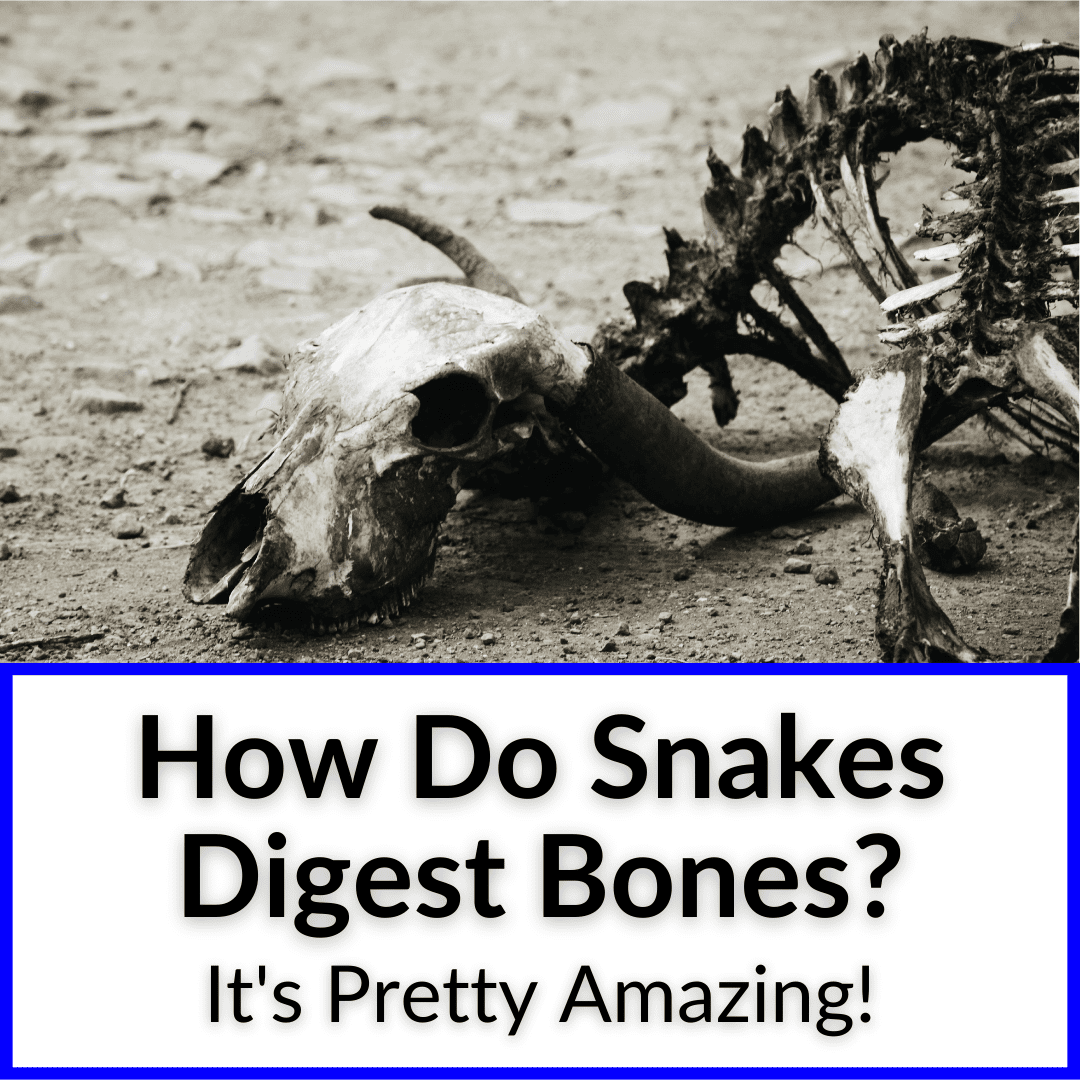 What’s the one snake fact everyone knows?
What’s the one snake fact everyone knows?
That they swallow their prey whole.
Obviously this includes the bones. So what happens with those?
Do they pass through the snake and end up in its poop?
Or can snakes actually digest the bones, which is something us mammals can not do?
And if that is the case, how do snakes digest bones?
Keep reading for all the answers and more. You’ll learn everything you every wanted to know about snake digestion.
How Do Snakes Digest Bones?
Snakes have incredibly strong stomach acid. This acid works at breaking down the bones of a snake’s prey as soon as it enters the snake’s stomach.
In addition, a snake’s prey can stay in its digestive system for anything up to several weeks. This is plenty of time to digest any large and chunky bones.
And it’s a really long time to feel full! I’m usually hungry again an hour after any meal….
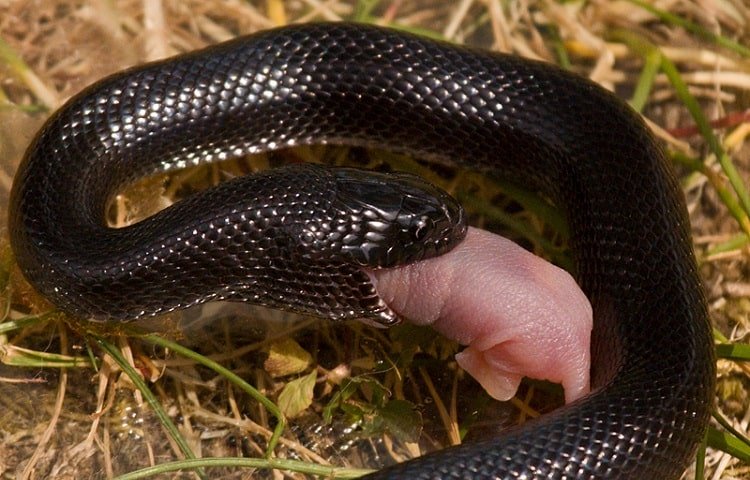
Let’s take a closer look at the reasons snakes can digest bones, while most other animals can not.
Reasons Snake Can Digest Bones
There are three primary reasons snakes are ale to digest bones, while mammals like us humans can not.
Jaw Ligaments
Snakes are well-known for eating their prey whole. They are able to pull this off due to the way their jaw expands once they’ve found their food.
The lower bones of the jaw do not connect in the same way a mammal’s does. Instead, each bone is attached by a stretchy ligament, enabling the snake to stretch its mouth wide enough to eat animals larger than them. For the largest snakes, this even includes humans.
Sometimes it can look like snakes are yawning when they open their mouths wide to loosen up their jaws before or after a meal? Can snakes yawn? No, but they can open their mouths wide is what is called ‘mouth gaping’.
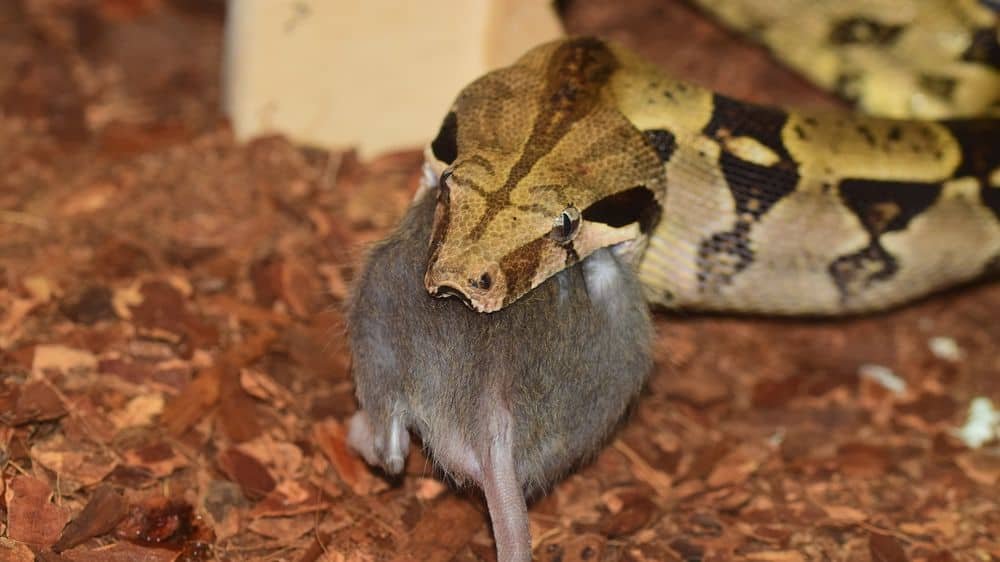
Lots Of Acid
In the same way the anatomy of a snake’s jaw is different to that of mammals, so is a snake’s digestive system. Snakes secrete an extremely large amount of hydrochloric acid when their prey enters their bodies, which is why they digest bones and mammals can’t.
It all comes down to the levels of acid in a snake’s body.
Once the prey has entered their stomach, the snake’s PH levels start to decrease. A snake’s neutral PH is level 7, but once the acid begins to enter its stomach, the pH starts to drop dramatically, down to levels of 2, or even 1.5, which is extremely acidic.
Once the stomach acid has broken the food down, the food then continues its journey through to the intestine, where it is broken down even more, before eventually being excreted.
Long And Slow Digestion
Snakes also digest food much slower than mammals. Unlike us humans, who digest food in a matter of a few hours, and then shortly after become hungry again, the process is much slower and longer for a snake.
The length of time it takes a snake to digest its food can range from several days up to several weeks. This long period of time is what gives the acid time to break down the prey’s bones.
The only part of its prey that the snake can’t digest is the fur. This is due to a resistant protein called keratin.
Help Your Snake Digest Its Prey
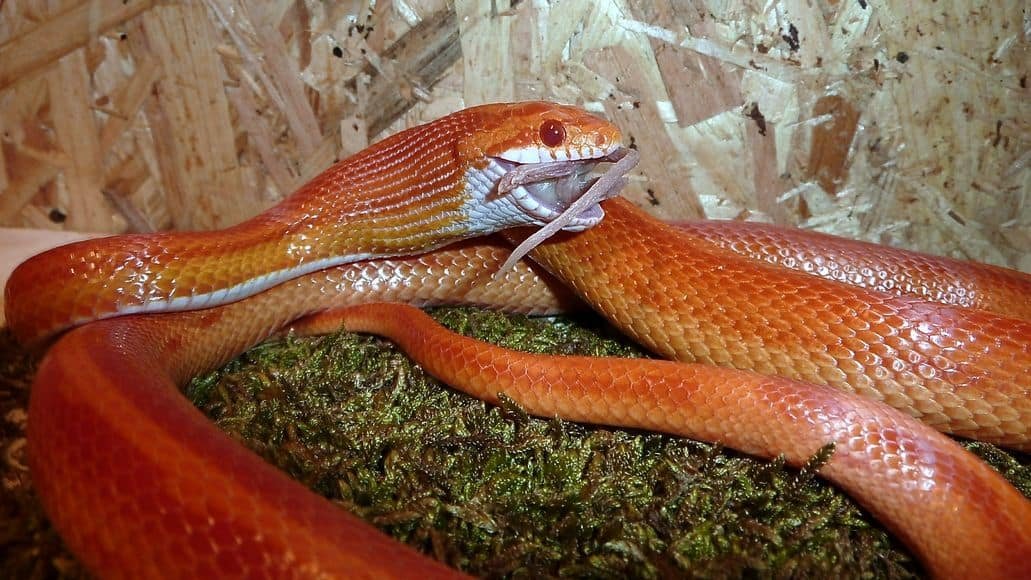
Regurgitation can sometimes become an issue, but there are preventive measures you can take to limit the chances of this happening. One preventative measure to take with your pet snake is to feed it adequately sized prey, which makes the food much easier to digest.
You should also make sure that your snake’s tank is well oxygenated. A lack of oxygen can be a contributing factor to regurgitation. This forces a snake’s organs to slow down, resulting in them not working as hard as they should.
Another preventative measure is to make sure your snake’s tank is at a warm temperature. Warmer air speeds up a reptile’s digestive system.
Do snakes ever choke on their food? This is highly unlikely. It is possible if a snake is suffering from a respiratory issue, but not otherwise.
Feed The Right Kind Of Prey
Also, if you’re feeding your snake defrosted prey, you’ll want to make sure it isn’t too cold. This can also lead to regurgitation. So always defrost any frozen prey to room temperature, before giving it to your snake.
The primary diet for your pet snake should be rodents. The small size of a rodent means it’s easier to digest and your snake shouldn’t encounter any issues when eating it.
A rodent’s size is small enough to avoid any issues with regurgitation, which can happen if a snake’s prey is too large, particularly if they aren’t used to eating extremely large prey. Make sure you feed your snake an appropriately sized rodent.
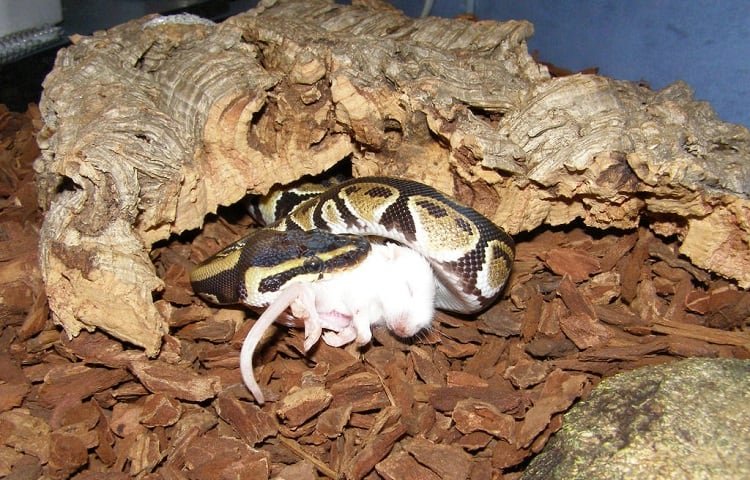
A big benefit to owning a snake owner is how much they actually need to eat. It is not a lot! If you have a small or young snake, they only need feeding around twice a week.
If you have an older or large snake, like a boa constrictor, you only need to feed it once a week, or even once every two weeks. Not only does this make things a little easier for you, but it’s also much easier on your wallet. Our article on what a boa constrictor eats has more.
It is, however, a good idea to start a feeding schedule for your snake, so that it knows exactly when it is due for another feeding. This can also help to avoid regurgitation.
Can Reptiles Digest Bones?
It isn’t just snakes that can digest bones. Most reptiles can do so. All reptiles eat their food whole. This includes reptiles like crocodiles, lizards, and Komodo dragons.
Just like snakes, other reptiles also secrete a large amount of stomach acid to break down the bones of their prey. Herbivorous reptiles even swallow rocks with their food to help break it down during the digestion process.
Are There Bones In Snake Poop?
Snake poop does not contain bones. If it does, then it will only be a couple of small ones, and nothing to worry about.
Their poop doesn’t contain bones due to the high levels of acid in their stomachs and the length of time that their prey actually stays in their stomach, digesting in the acid.
A snake’s acid is able to completely break down any bones. That means if you do find any large bones, or more than a couple at a time, it may be best to take your pet to the vet.
What Happens When A Snake Eats Something Alive?
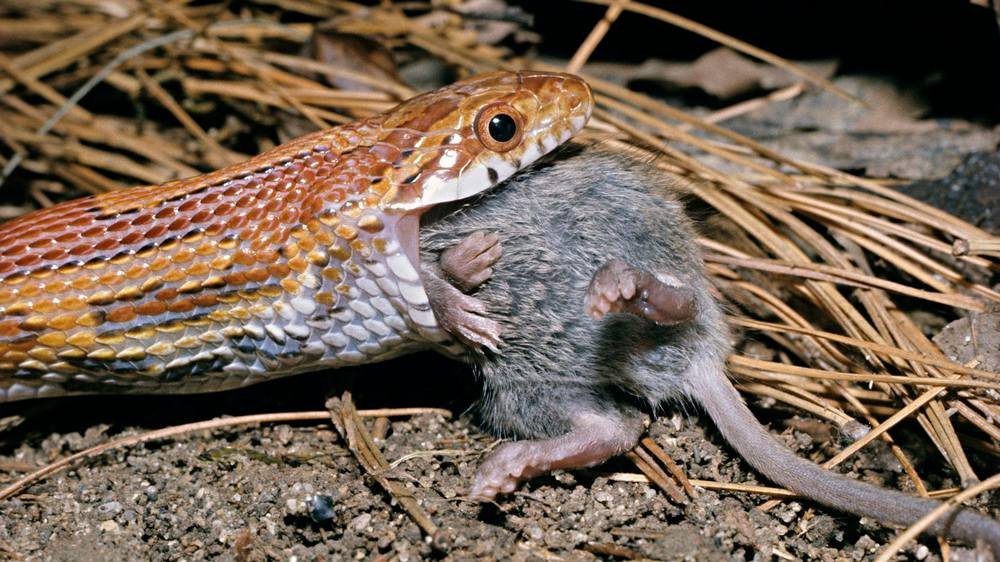
Those who are squeamish should probably stop reading now! Actually, it’s not so bad. And if you own a snake, or are considering it, this is something you need to get used to anyway.
That said, the truth is that most snakes do not eat their prey alive. They generally wait until their prey is dead, before swallowing it.
Most snakes constrict their prey. They wrap themselves around the prey’s body and tighten their grip every time it tries to breathe. They literally squeeze the life out of it, and eventually end up killing it.
Other snakes inject venom into the prey through their teeth. This also leads to its death.
Once the snake has killed its prey, it will then open its jaw wide and consume the animal whole. Once the prey is in the stomach, the snake slowly digests it, until there’s nothing left. Of course, if the prey is too large, then the snake may regurgitate it.
How Snakes Digest Bones: Final Thoughts
Now we know that snakes do, in fact, digest the bones of whatever prey they swallow. And we also know that they are able to do so thanks to a lot of stomach acid and a very long digestive process.
After many days, and in some cases weeks, of stewing in hydrochloric acid, whatever animal a snake swallows is completely dissolved, apart from the fur. Pretty amazing, right?
Leave a Reply